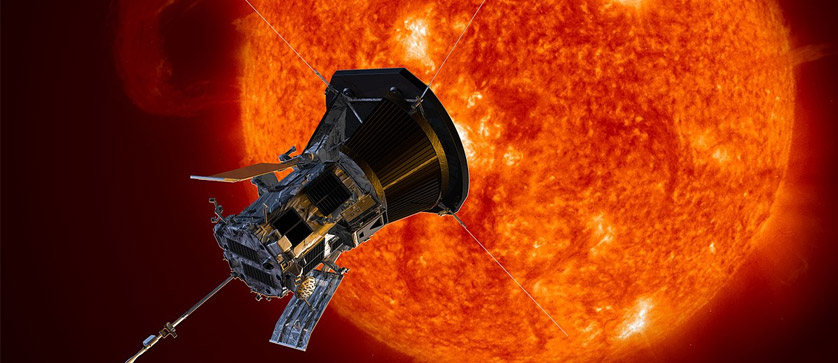NASA: The Modern Day Icarus?
NASA's latest solar probe will fly closer to the sun than any other craft in history. Beginning its seven-year journey to enter the sun's atmosphere, the $1.5 billion mission saw the Parker solar probe (a robotic spacecraft) being launched from Cape Canaveral in Florida on 12th August.
The probe, which is about the size of a small car, will fly into the outermost part of the sun's atmosphere, the corona, venturing within 3.8 million miles of the sun's surface. A mission aimed at understanding more about the causes of solar wind, scientists will collect data about the inner workings of the corona.

Credit: NASA
Background
The human race has wondered about the sun and its relationship to the earth for thousands of years. According to Ancient Greek mythology, Icarus and his father, the master craftsman Daedalus, suffered a terrible disaster when they flew close to the sun.
Unlike their modern-day counterparts, they used simple wings made of feathers and wax, but Icarus ignored his father's warning and flew too close to the sun. So the story goes, the wax holding his wings together melted and he fell to his doom.
Humankind's 21st century mission to fly to the sun is the culmination of more than 60 years' research into the existence of solar wind. Thousands of spectators gathered to witness the launch of the first ever solar probe to the sun, amongst them, University of Chicago astrophysicist Eugene Parker watched in anticipation.
<iframe width="100%" height="50%" src="https://www.youtube.com/embed/gYzIryEdo7k" frameborder="0" allow="accelerometer; autoplay; encrypted-media; gyroscope; picture-in-picture" allowfullscreen></iframe>
Born in 1927, Parker, now aged 91, developed his theory of supersonic solar wind in the mid-1950s, predicting the spiral shape of the solar magnetic field in the outer solar system. The new spacecraft was named in his honour and he said he was eager to see the solar probe soaring off on the start of its mission.
Launch
The launch itself was a miracle of modern engineering, with the Delta 4-Heavy rocket being lifted vertically on to the launch pad back on 17th April, in readiness for the Parker probe. The Delta 4 was rolled to the pad from its nearby horizontal integration hangar the previous day.
Meanwhile, the Parker solar probe had been transported from the Johns Hopkins Applied Physics Laboratory to Florida on 3rd April on board a US Air Force cargo plane. The probe was then taken by truck to a clean room at the Astrotech Space Operations facility, based in Titusville.
Technicians worked inside the Delta 4 rocket, assembling its three first-stage booster cores, which arrived from United Launch Alliance’s Alabama factory. The booster cores were transported in two shipments on board the Mariner - the company’s rocket transport ship.
After connecting the Delta 4-Heavy’s upper section in March, the launcher was transferred to Cape Canaveral’s Complex 37B launch pad.
Massive hydraulic lifts were used to hoist the rocket into a vertical position inside the launch pad’s mobile gantry. This was the start of final checks and launch day rehearsals, including a fuelling test, before the actual launch could take place.
Ground-breaking mission
The National Aeronautics and Space Administration made Parker's dream possible, as the solar probe blasted off on a course that will take it past Venus, looping around the sun and sweeping ever lower into the star’s extremely hot atmosphere.
Shining like a halo in a total solar eclipse, the corona has a temperature ranging from 1.7 million °C to more than 17 million °C, making it hotter than the sun's surface.
The voyage has taken so much planning because it is a mission like no other - the spacecraft required 55 times more launch energy than a voyage to Mars.
This is why the Parker solar probe is only around the size of a family car, yet it stands on a Delta 4 Heavy rocket, 72 metres tall and 15 metres wide, holding more than 600 tonnes of fuel. It is destined to complete 24 orbits of the sun over a seven-year period.
It will shoot through space at 450,000mph and will use seven Venus gravity-assist flybys. Gravity-assists help flybys by providing a "slingshot" motion to help propel a space probe on its journey. The Parker probe travels faster than any human-made object in history.
Prior to the Parker probe, the Helios 2 (launched in 1976) passed within 27 million miles of the sun.
NASA expeditions
As the US government agency responsible for technology and science relating to air and space, NASA is also a partner in the International Space Station, which is a habitable artificial satellite that was first launched into low earth orbit in 1998.
The programme is a joint operation managed by five participating space agencies - NASA, JAXA, Roscosmos, ESA and CSA. The use of the space station is established by treaties and agreements between governments.
Serving as a space environment research laboratory, the ISS is expected to operate until 2028, testing spacecraft systems required for missions to mars and the moon. Crew members conduct experiments in physics, biology, meteorology, astronomy and other fields.
Phoenix Hydraulics Ltd.
Established for more than 35 years, Phoenix Hydraulics is one of the largest independent hydraulics companies in the United Kingdom. We offer specialist services and stock the best selection of hydraulic pumps on the market. Please contact us on 01733 234800 for further details of our products and services.


